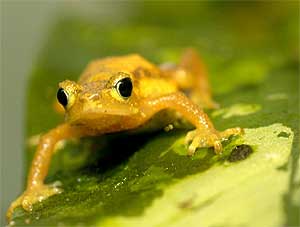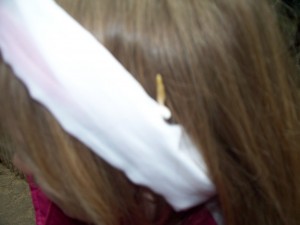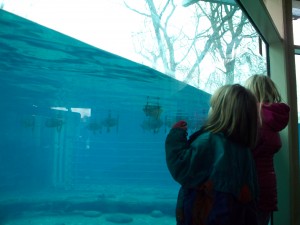As a change of pace from the usual “the world is falling apart”-type articles about conservation, I decided to share the following article from CNN.com about an area of Asia called the Mekong Delta region. Scientists are calling the place a “biological treasure trove” because of its rich diversity of flora and fauna. 1,068 species were discovered there between 1997 and 2007 alone; including 15 new species of mammals. Fascinating stuff AND something to read that contains promising news about the status of the Earth, rather than the usual bad news and negativity. Here is the article – I find the part about the hot pink cyanide-producing dragon millipede particularly interesting – there’s a picture of it on cnn.com, see the link at the bottom of this post.
(CNN) — A rat believed to be extinct for 11 million years, a spider with a foot-long legspan, and a hot pink cyanide-producing “dragon millipede” are among the thousand newly discovered species in the largely unexplored Mekong Delta region.
The “dragon millipede” is among the 1,068 new species discovered in the Mekong Delta region.
more photos » The region, including parts of Vietnam and five other countries, is home to 1,068 species found between 1997 and 2007, according to a World Wildlife Fund report released this week.
Some of the creatures were not lurking in fertile floodplains or tropical foliage.
A scientist visiting an outdoor restaurant was startled to see a Laotian rock rat among the nearby wildlife. The hairy, nocturnal, thick-tailed rat, which resembles a squirrel, had been thought for centuries to be extinct.
“There is a certain amount of shock because our scientists will sometimes see something that doesn’t fit anything they know,” said Dekila Chungyalpa, Director of the Fund’s Mekong Program. “They run through a catalogue of wildlife in their brain, asking themselves, ‘Have I seen this?'”
Perhaps a more startling discovery than the rat was a bright green pit viper scientists spotted slithering through the rafters of a restaurant in Khao Yai National Park in Thailand.
The Fund dubbed the Mekong a “biological treasure trove.” The organization’s report “First Contact in the Greater Mekong” says 519 plants, 279 fish, 88 frogs, 88 spiders, 46 lizards, 22 snakes, 15 mammals, four birds, four turtles, two salamanders and a toad were found.
Scientists are still trying to determine if they have uncovered thousands of new invertebrate species.
Scientists are discovering new species at a rate of two per week, said Chungyalpa, who said the reason for publishing the report now was twofold.
“We realized that we should highlight these discoveries in part because of the legacy of war and conflict in the region,” she said. “There’s an urgency with the threat of development in the Mekong countries.”
A horned bovine found in 1991 living in the evergreen forests of the Annamite Mountains of Laos and Vietnam has not been found in recent years, she said.
Timber development and mining industries are encroaching. There are 150 large hydropower dams that have been constructed along the Mekong river, and another 150 are slated to be built, according to the Fund. Dams that can trap and kill fish are at different stages of planning in the Greater Mekong.
High variation in geography and climate zones that enabled species to flourish are now jeopardized by climate change, said Chungyalpa.
War is always a threat in countries touched by the Mekong River, particularly Burma. Also known as Myanmar, the largest country by geographical area in mainland Southeast Asia has been ravaged over the years by conflict, political instability and natural disaster.
This summer, for example, the United Nations reported that as many as 100,000 people were killed by a cyclone that hit Myanmar. The country’s ruling military junta blocked the outside world for weeks before allowing aid to flow into the region.
There are cultural obstacles to protecting rare species, too. Many restaurants serve them as food. Restaurants often have rickety bamboo floors that one can look through to see cages filled with exotic animals, Chungyalpa says. The more exotic the animal, the more status it often bestows on the person who consumes it.
“Reports [like the WWF’s] are important because these regions can be educated,” said Maureen Aung-Thwin, the director of The Burma Project, which is funded by the George Soros Foundation and supports local Indonesian organizations working toward an open society.
“People are taking climate change more seriously and even the ruling junta have a forestry NGO. There are glimpses of hope,” said Aung-Thwin. “But it’s also a situation where someone could step forward and say ‘We don’t need this’ and cut it all down.”
WWF said it is working with governments and industry to plan the conservation of more than 231,000 square miles of forest and freshwater habitats that cross borders with all countries in the Greater Mekong.
The preceding article was published on CNN.com. To read the entire original article, click here.




